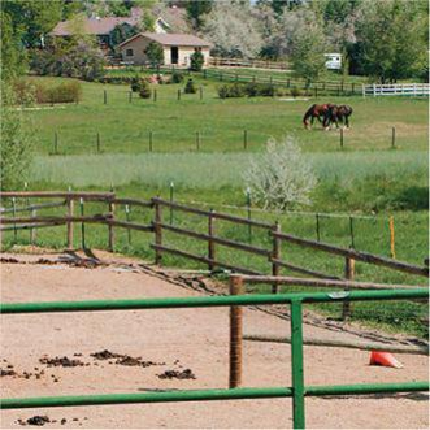Agriculture Reference
In-Depth Information
Good sanitation practices are essential for suburban horsekeeping. A well-run horse
acreage adds interest and a special ambience to the neighborhood.
No matter whether your horses are pastured or stabled, they will produce generous
amounts of manure and urine daily. In an enclosed barn, the added waste products of res-
piration of the skin and lungs help to make the environment an ideal breeding ground for
bacteria.
Urine contains urea and hippuric acid, both of which release ammonia, a volatile gas, in-
to the air. The pungent vapor can be injurious to the eyes and lungs of horses and humans.
To minimize ammonia, feed adequate but not excessive protein (minimal alfalfa hay), clean
stalls regularly, and provide adequate ventilation.
Waste products can also be destructive to flooring and walls, tack, and horses' hooves.
The combination of dung and urine is a perfect medium for the proliferation of bacteria
that can begin destructive processes on leather. Dung and urine can also break down the in-
tegrity of hoof horn. When certain fecal bacteria ferment, their secretions can dissolve the
intertubular “hoof cement.” In addition, moist manure softens, loosens, and encourages the
breakdown of hoof horn cells, even more aggressively than water or mud does.
Wherever there is manure, there are parasite larvae. Horse parasites leave the horse host
via the manure, then reinfest a new host; the life cycle is then repeated. When a horse eats

